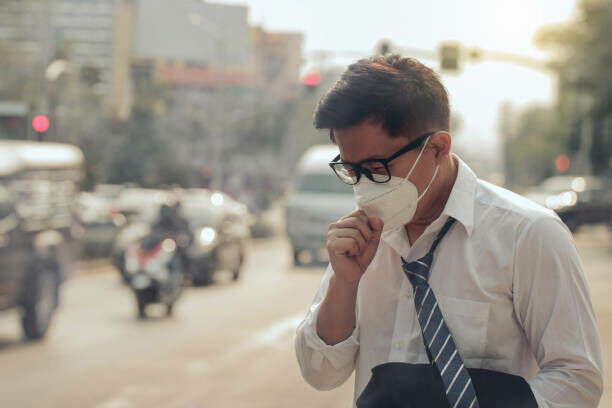Bangkok grapples with hazardous PM2.5 pollution levels

Bangkok and 38 other provinces in Thailand are currently experiencing dangerous levels of PM2.5 pollution, prompting health warnings and recommendations for the public to wear masks at all times when outdoors. The Geo-Informatics and Space Technology Development Agency (GISTDA), together with the National Research Council of Thailand, the Pollution Control Department, Kasetsart University, and Chiang Mai University, are closely monitoring the situation.
The air quality in Bangkok has reached hazardous levels, surpassing the standard threshold, with all districts affected by the toxic dust. The application Check Dust provides hourly updates on PM2.5 levels, using satellite data and AI technology to analyse and present the information in an accessible format. The app’s forecast indicates that in the next three hours, many areas will continue to see air quality levels in the red zone, especially in the central region of the country, reported KhaoSod.
On Valentine’s Day at 8am, it was reported that the province of Samut Sakhon topped the list with a PM2.5 concentration of 162.1 microgrammes per cubic metre, followed by Bangkok at 146.3, Samut Prakan at 140.5, Nonthaburi at 136.8, and Nakhon Pathom at 136.2. In Bangkok, the districts of Phra Khanong, Khlong Toei, Wang Thonglang, Bang Na, and Watthana were particularly affected, with readings exceeding 172 micrograms per cubic metre.
The application Check Dust combines satellite technology with AI to provide a comprehensive view of the pollution crisis, integrating data from various sources including ground measurements, weather conditions from the Meteorological Department of Thailand, and potential sources of dust such as hotspots. This collaborative approach allows the public to stay informed and take necessary precautions to protect their health, especially those with respiratory conditions.
Authorities continue to advise the public to wear masks and take preventive measures to minimise exposure to harmful particles. The collaboration between GISTDA and its partners showcases the use of advanced technology in addressing environmental and public health challenges. This situation serves as a reminder of the urgent need for effective air quality management and pollution control measures to safeguard the health of Thailand’s citizens.
Latest Thailand News
Follow The Thaiger on Google News:
























